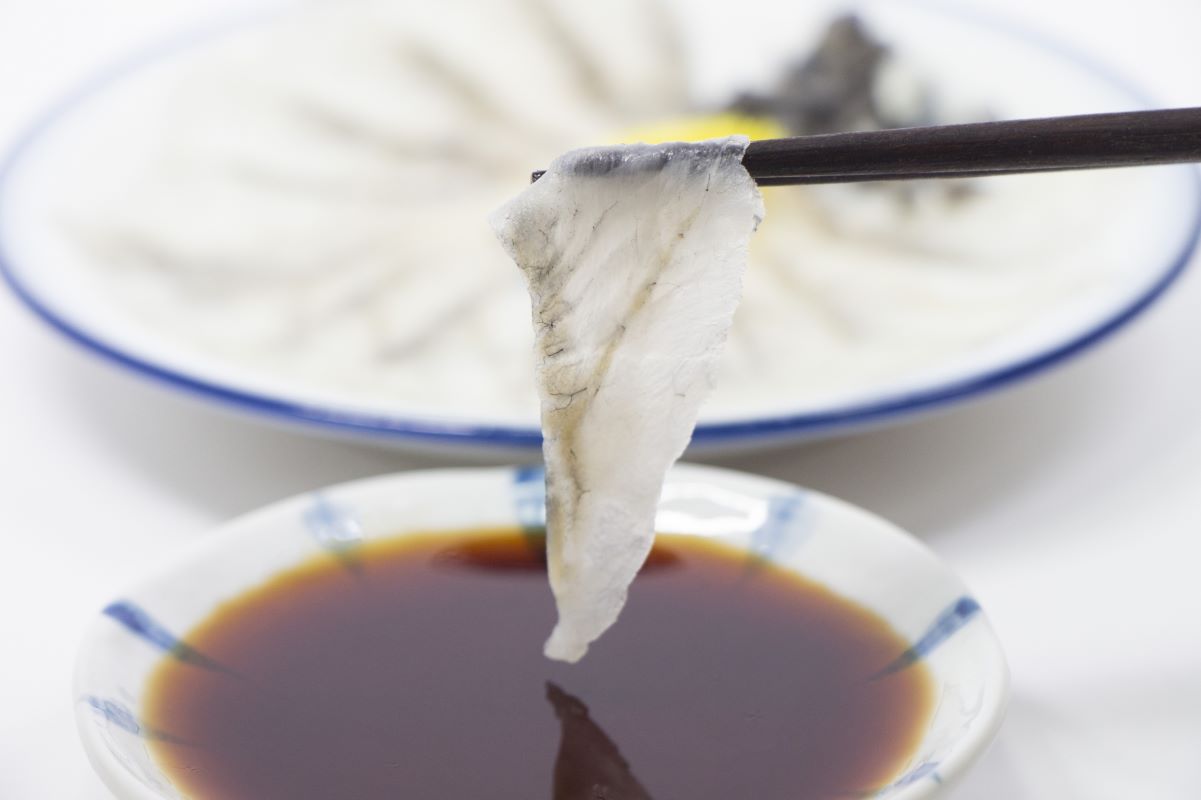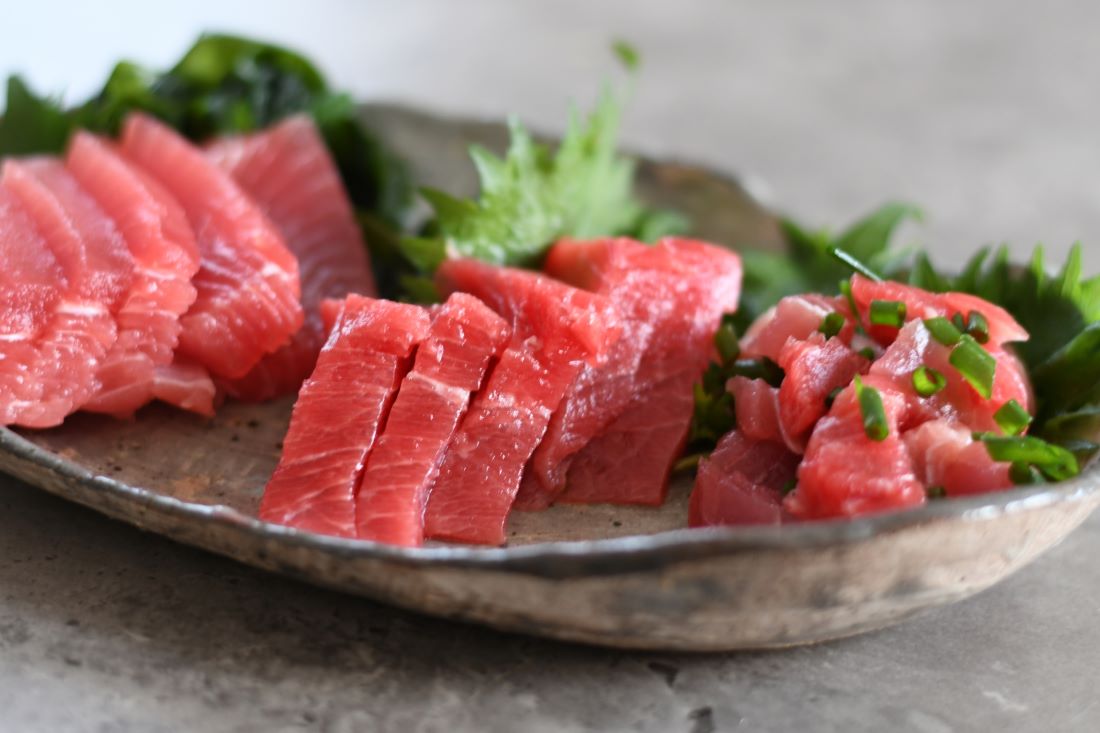Sashimi is a popular Japanese dish that has been enjoyed for centuries. It is a type of sushi that consists of thin slices of raw fish, typically served with soy sauce and wasabi. Sashimi is known for its fresh, delicate flavors and is often considered a delicacy in many parts of the world.

The origins of sashimi can be traced back to the Edo period in Japan, when fishermen would catch fish and slice it into thin pieces to eat on the spot. Over time, this practice evolved into a more refined culinary art form, with chefs carefully selecting and preparing the fish to highlight its natural flavors and textures.
Today, sashimi is enjoyed by people all over the world, and has become a staple in Japanese cuisine. From traditional tuna and salmon sashimi to more exotic varieties like octopus and sea urchin, there is a wide range of options to choose from. Whether you are a seasoned sushi lover or trying sashimi for the first time, it is a dish that is sure to delight your taste buds and leave you wanting more.
What is Sashimi?

Sashimi is a Japanese dish that consists of thinly sliced raw fish or meat served with soy sauce and wasabi. The word “sashimi” means “pierced body” in Japanese, which refers to the way the fish is traditionally served.
Unlike sushi, which is typically served with rice, sashimi is served on its own and is meant to be enjoyed for the quality and freshness of the fish. The most popular types of fish used for sashimi include tuna, salmon, and yellowtail, but other types of seafood and meat can also be used.

When preparing sashimi, it’s important to use the freshest ingredients possible to ensure the best taste and texture. The fish should be sliced thinly and served immediately to preserve its freshness and flavor. Sashimi is often served with garnishes such as shredded daikon radish, shiso leaves, and pickled ginger to add flavor and texture.
If you’re new to sashimi, it’s important to note that the taste and texture of raw fish can be quite different from cooked fish. Some people find sashimi to be an acquired taste, but many others enjoy the delicate flavor and texture of this traditional Japanese dish.
Types of Sashimi

When it comes to sashimi, there are a variety of different types to choose from. Each type of sashimi has its own unique flavor and texture, making it a popular choice for sushi lovers all around the world. Here are some of the most popular types of sashimi:
Tuna (Maguro)
Tuna sashimi is one of the most popular types of sashimi. It is known for its rich, meaty flavor and buttery texture. The best tuna sashimi is made from the freshest fish, which is often served raw with a touch of wasabi and soy sauce.
Salmon (Sake)
Salmon sashimi is another popular choice among sushi lovers. It has a delicate flavor and a soft, buttery texture that melts in your mouth. Salmon sashimi is often served with a slice of lemon or a sprinkle of sea salt.
Yellowtail (Hamachi)
Yellowtail sashimi has a mild, sweet flavor and a firm, meaty texture. It is often served with a drizzle of ponzu sauce or a sprinkle of green onions.
Halibut (Hirame)
Halibut sashimi has a delicate, sweet flavor and a firm, flaky texture. It is often served with a touch of wasabi and soy sauce, as well as a slice of ginger to cleanse the palate.
Octopus (Tako)
Octopus sashimi has a chewy texture and a slightly sweet flavor. It is often served with a drizzle of sesame oil and a sprinkle of green onions.
Overall, sashimi is a delicious and healthy choice for sushi lovers. Whether you prefer tuna, salmon, yellowtail, halibut, or octopus, there is a type of sashimi out there for everyone.
How to Prepare Sashimi

Sashimi is a Japanese delicacy that is known for its raw fish and clean flavors. Preparing sashimi is an art form that requires precision, skill, and knowledge. Here are some tips on how to prepare sashimi like a pro.
1. Choose the Right Fish The first step in preparing sashimi is to choose the right fish. Look for fish that is fresh, firm, and has a bright color. Some popular fish for sashimi include tuna, salmon, yellowtail, and mackerel.
2. Prepare the Fish Once you have chosen your fish, it’s time to prepare it. Start by removing the skin and bones, and then cut the fish into thin slices. Use a sharp knife to ensure that the slices are even and smooth.
3. Serve with the Right Accompaniments Sashimi is traditionally served with soy sauce, wasabi, and pickled ginger. Arrange the fish slices on a plate and serve with these accompaniments on the side. You can also add other condiments such as ponzu sauce, sesame oil, or grated daikon radish.
4. Enjoy! Sashimi is best enjoyed fresh, so be sure to serve it immediately after preparing it. Take a slice of fish, dip it in the soy sauce and wasabi mixture, and enjoy the clean, fresh flavors.
Remember, preparing sashimi takes practice and patience. Take your time, choose the right fish, and enjoy the process of creating this delicious Japanese delicacy.
Serving Sashimi

Sashimi is a Japanese dish that is typically served as an appetizer or a main course. It is a dish that is made up of thinly sliced raw fish that is served with soy sauce, wasabi, and pickled ginger. Sashimi is a dish that is enjoyed by many people around the world, but it is important to know how to serve it properly to get the most out of this delicious dish.
When serving sashimi, it is important to use fresh, high-quality fish. The fish should be sliced thinly and served cold. The best way to serve sashimi is on a bed of ice to keep it fresh and cold. It is important to use the right type of knife when slicing the fish to ensure that it is cut cleanly and evenly.
When serving sashimi, it is traditional to serve it with soy sauce, wasabi, and pickled ginger. The soy sauce should be poured into a small dish and the wasabi should be added to it to create a dipping sauce. The pickled ginger is served on the side and is used to cleanse the palate between bites of fish.
When eating sashimi, it is important to use chopsticks to pick up the fish and dip it into the soy sauce and wasabi mixture. It is important to use a small amount of soy sauce and wasabi to avoid overpowering the delicate flavor of the fish. It is also important to eat the fish in small bites to fully appreciate the flavor and texture of the fish.
In conclusion, serving sashimi is a simple process that requires high-quality fish, the right tools, and traditional accompaniments. When served properly, sashimi is a delicious dish that is sure to impress your guests.
Sashimi Etiquette
Sashimi is a Japanese delicacy that has become increasingly popular around the world. It is a dish that consists of thin slices of raw fish or seafood that is typically served with soy sauce and wasabi. However, there are certain rules that should be followed when eating sashimi to fully appreciate its flavor and texture.
Firstly, it is important to use chopsticks when eating sashimi. This is because using your hands can transfer oils and bacteria to the fish, altering its flavor and texture. Additionally, it is considered rude to touch the fish with your hands.
When dipping the sashimi into soy sauce, it is important to dip it fish-side down to prevent the rice from absorbing too much soy sauce. It is also important to use a small amount of soy sauce to avoid overpowering the delicate flavor of the fish.
When eating sashimi, it is important to eat each piece in one bite. This allows you to fully appreciate the flavor and texture of the fish. Additionally, it is considered rude to leave any pieces of fish on your plate.
Finally, it is important to never mix wasabi into the soy sauce. Instead, the wasabi should be placed directly on top of the fish before dipping it into the soy sauce. This allows you to fully appreciate the flavor of the wasabi without overpowering the delicate flavor of the fish.
By following these rules of sashimi etiquette, you can fully appreciate the delicate flavors and textures of this Japanese delicacy.
Health Benefits of Sashimi

When it comes to sushi, many people immediately think of the rolls filled with rice and other ingredients. However, sashimi is a type of sushi that is made up of thinly sliced raw fish, often served with soy sauce and wasabi. Not only is sashimi delicious, but it also has several health benefits that make it a great addition to any diet.
First and foremost, sashimi is an excellent source of protein. Protein is essential for building and repairing tissues in the body, and it also helps to keep you feeling full and satisfied. Raw fish is also low in calories, making it a great option for those who are watching their weight.
In addition to being a good source of protein, sashimi is also rich in omega-3 fatty acids. Omega-3s are known for their anti-inflammatory properties, and they have been linked to a reduced risk of heart disease, stroke, and other chronic conditions. Raw fish is also a good source of vitamins and minerals, including vitamin D, vitamin B12, and iron.
Some people may be concerned about the risk of foodborne illness when it comes to eating raw fish. However, if the fish is sourced from a reputable supplier and prepared properly, the risk of illness is low. It’s important to note that pregnant women, young children, and those with compromised immune systems should avoid eating raw fish.
In conclusion, sashimi is a delicious and nutritious option for those who enjoy sushi. It’s a great source of protein, omega-3 fatty acids, and essential vitamins and minerals. As with any food, it’s important to consume sashimi in moderation and to ensure that it is prepared safely.
The Take Away

After experiencing the delicious and fresh taste of Sashimi, it’s clear that this Japanese dish is a must-try for any seafood lover. The simplicity of the dish, with its focus on the quality and freshness of the fish, is what sets it apart from other sushi dishes.
Not only is Sashimi a delicious culinary experience, but it is also a healthy one. The high protein content and low calorie count make it a great option for those looking to maintain a balanced diet. Additionally, the omega-3 fatty acids found in many types of fish used in Sashimi have been linked to numerous health benefits, including reducing the risk of heart disease.
While Sashimi may seem intimidating to those who are not familiar with raw fish dishes, it is important to note that the fish used in Sashimi is of the highest quality and is handled with care by trained professionals. When dining at a reputable restaurant, there is no need to worry about the safety of the dish.
Overall, Sashimi is a dish that should not be missed. Its unique taste, health benefits, and cultural significance make it a valuable addition to any foodie’s bucket list.



